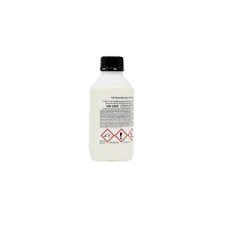coagulation flocculation
Coagulation and Flocculation Essential Processes in Water Treatment
Water treatment is a critical process ensuring the provision of clean and safe drinking water. Among the various techniques employed in this process, coagulation and flocculation are fundamental steps that significantly enhance water quality. These two processes work together to remove suspended solids, colloids, and contaminants, ensuring that water is not only safe for consumption but also meets environmental standards.
Understanding Coagulation
Coagulation is the initial stage of the treatment process. It involves the addition of chemical coagulants to water to destabilize suspended particles. Common coagulants include aluminum sulfate, ferric chloride, and polyaluminum chloride. These substances neutralize the electrostatic charges that keep particles suspended in water, allowing them to clump together. The effectiveness of coagulation is influenced by various factors such as pH, concentration of coagulants, and the nature of the contaminants present.
The mechanism behind coagulation is primarily based on the principle of charge neutralization. Most particles in water carry a negative charge, which prevents them from combining. By adding a positively charged coagulant, these particles can be neutralized and begin to aggregate. This process is usually rapid and occurs within minutes, paving the way for the subsequent flocculation phase.
The Flocculation Process
Following coagulation, flocculation is the next critical step. Flocculation involves the gentle mixing of treated water to encourage the formation of larger aggregates, known as flocs. During this phase, the smaller coagulated particles collide and bind together to form larger, more easily removable flocs. The process typically uses slower stirring rates to minimize shear forces that might break apart the developing flocs.
coagulation flocculation

The flocculation process can be facilitated by the addition of polymers, which help to bridge the gaps between particles, enhancing floc formation. These flocculants can be either natural or synthetic and contribute to the aggregation of solids, making them heavier and easier to settle.
Importance of Coagulation and Flocculation
The combined processes of coagulation and flocculation are vital for several reasons. Firstly, they significantly reduce turbidity, which is often a major concern in water quality. High turbidity levels can harbor pathogens and pollutants, making water unsafe to consume. By effectively removing these particulates, coagulation and flocculation help produce clear and clean water.
Secondly, these processes can also remove various organic and inorganic contaminants, including heavy metals and microorganisms. This is particularly important as water sources become increasingly polluted due to industrial discharges and agricultural runoff. By employing coagulation and flocculation, water treatment facilities can enhance the overall safety of drinking water.
Moreover, these processes contribute to the efficacy of subsequent treatment stages, such as sedimentation and filtration. By reducing the amount of suspended solids before these stages, they improve the overall efficiency and effectiveness of the entire water treatment process.
Conclusion
As global water scarcity and contamination issues escalate, the importance of effective water treatment processes like coagulation and flocculation becomes ever more apparent. These processes not only improve water quality by removing harmful contaminants but also ensure compliance with health standards. Understanding and optimizing these techniques are crucial for sustainable water management in both developed and developing regions. By continuing to invest in and improve coagulation and flocculation methods, we can effectively address the pressing challenges of water treatment, securing safe drinking water for future generations.
-
Pbtc Scale InhibitorPBTC: A Scale Protector for Industrial Water TreatmentNewsAug.05,2025
-
Organic Phosphonate: An Efficient Defender in the Field of Scale InhibitionNewsAug.05,2025
-
Hydrolyzed Polymaleic Anhydride: Green Pioneer in Scale Inhibition FieldNewsAug.05,2025
-
PAPEMP Polyamino Polyether Methylene Phosphonic Acid For SaleNewsAug.05,2025
-
Flocculant Water Treatment: A Pioneer in Purification in the Field of Water TreatmentNewsAug.05,2025
-
Benzyl Isothiazolinone: An Efficient and Broad-Spectrum Antibacterial Protective GuardNewsAug.05,2025





